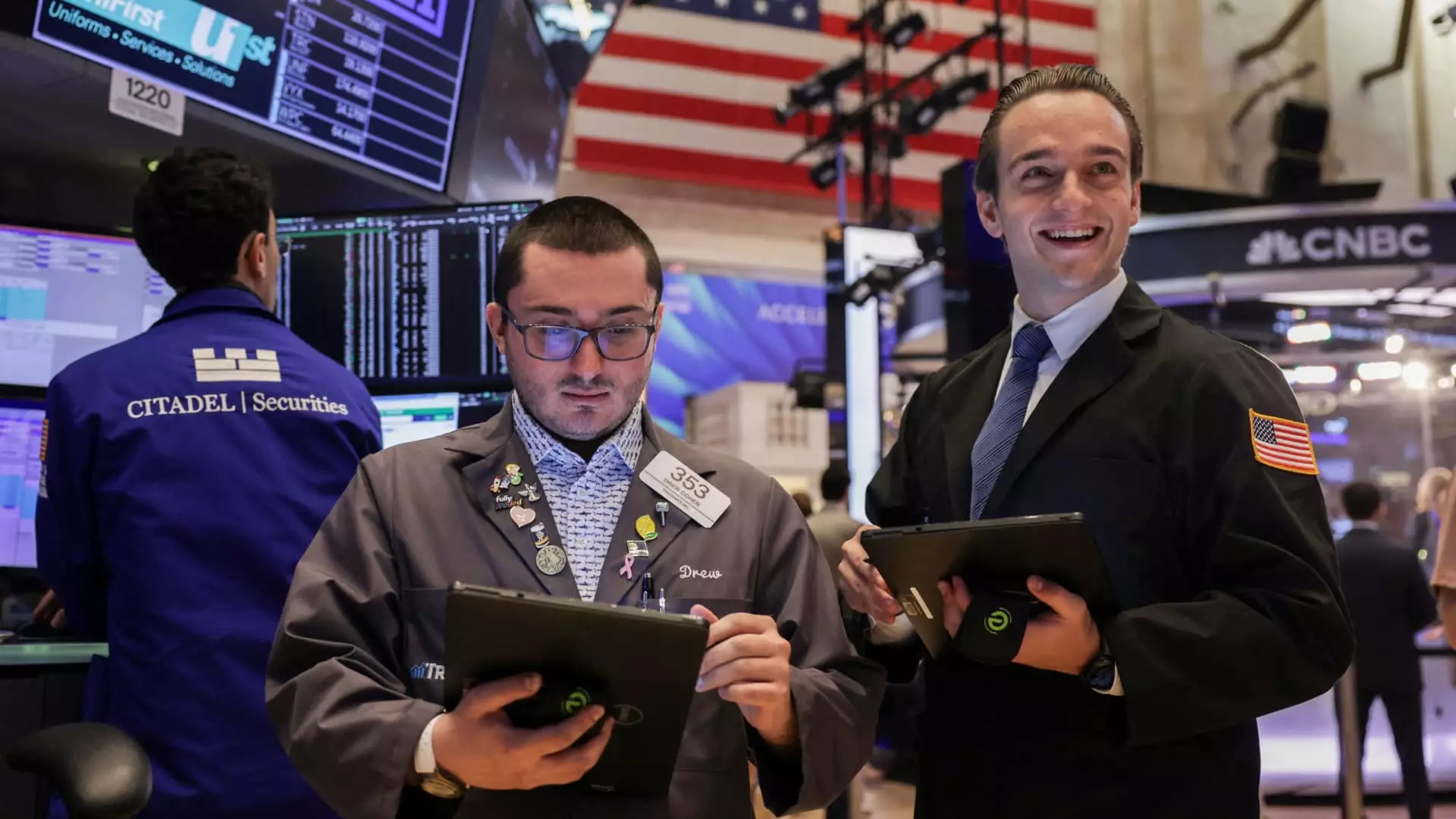The recent surge in the stock market, exemplified by record-breaking highs and steady gains, appears, on the surface, to be a sign of economic strength. Yet, beneath this polished veneer lies an uncomfortable truth: much of this rally is built on fragile fundamentals and the illusion of resilience. The market’s celebration of earnings figures that somewhat beat expectations masks deeper concerns about sustainability and systemic vulnerabilities. While the headlines trumpet record closes and robust indexes, the reality is that underlying risks—like geopolitical tensions, tariff uncertainties, and inflated valuations—are largely brushed aside by mainstream narratives eager to perpetuate a sense of optimism.
Much of the recent optimism hinges on the so-called “bullish fundamentals”—stable inflation, moderate interest rates, and ostensibly solid earnings. But are these pillars as firm as they seem? The truth is that the global economic landscape remains riddled with geopolitical fissures, trade uncertainties, and policy ambiguities that threaten to destabilize this fragile upward trajectory. Investors, seduced by the prospect of continued growth, often ignore the warning signs that point toward overextension and impending correction.
The Mirage of Earnings and Market Strength
It’s easy to get swept up in the euphoria of companies surpassing earnings estimates—Alphabet and Verizon leading the charge with impressive weekly gains. However, the focus on beating Wall Street’s forecasts can be deceptive; earnings can be manipulated or adjusted to meet expectations temporarily, creating an illusion of genuine economic vigor. The over 80% of S&P 500 firms reporting better-than-expected results might signal strength, but it also signals the “earnings management” game that companies play to maintain investor confidence.
Furthermore, the narrative of a resilient market ignores the underlying dependency on artificial liquidity and low interest rates. The Federal Reserve’s interest rate pause, widely expected to remain between 4.25% and 4.5%, offers a lifeline to financial markets that are increasingly disconnected from the real economy. The correlation between these policies and market performance highlights the systemic dependency on monetary accommodation—a hopeful but perilous strategy when the economic environment is volatile and geopolitical risks escalate.
The Fake Certainty of Trade Deals and Political Optimism
Market rallying on recent trade negotiations between the U.S. and other major players seems optimistic on a superficial level. The announcement of trade agreements with Japan, Indonesia, and discussions with the EU serve as reassuring signals. But this optimism might be misplaced. Trade talks are complex, often slow-moving, and fraught with compromises that are rarely as beneficial as they appear on the surface. The “massive” trade deal with Japan and potential agreements with the EU may temporarily lift sentiment, yet they do not eliminate the underlying tensions that have historically destabilized markets.
Furthermore, the presence of tariffs, even at seemingly low levels like 15%, injects uncertainty into global supply chains and corporate planning. The conversations and negotiations are inherently unpredictable, and the mere possibility of escalating trade tensions or sudden policy reversals can unleash volatility. Pushing the market higher on these tentative agreements ignores the precarious balancing act policymakers face amid mounting geopolitical conflicts and regional instability.
The Fragile Promise of Market Resilience
Despite the apparent strength of the current rally, a critical perspective must question whether this resilience holds any real substance. The patterns we’re witnessing resemble a house of cards—an ostensible edifice of strength that could easily collapse under accumulated pressures. Market participants are riding a wave of psychological momentum fueled by low interest rates, optimistic earnings, and geopolitical talk—yet these are not guarantees of long-term stability.
The central issue lies in the overconfidence that palpable fundamentals alone can sustain such lofty valuations. Inflation appears “under control,” but this assessment often overlooks the inflationary pressures latent in supply chains and labor markets. Interest rates may be stable now, but they remain a tool for the Federal Reserve to keep the economy artificially afloat—an ephemeral buffer that could evaporate rapidly should external shocks occur.
In the larger context, the market’s upward trajectory seems increasingly disconnected from the real economy—failing to account for income inequality, inflationary burdens on families, and the mounting political polarization that threatens broader stability. This disconnect highlights a fragile market environment where optimism often serves as a veneer for systemic fragility, and at any moment, the illusion could shatter, leaving investors reeling from the realization that the ‘bull market’ is a carefully curated mirage.

Leave a Reply